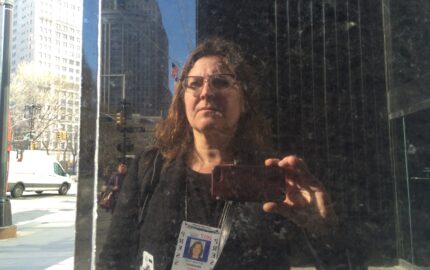Iawoke on a recent morning thinking about death. Not morbidly about my own — though at this age, the clock ticks more loudly, so that’s not a far reach. These thoughts were about the too-many friends I’ve been visiting who are seriously ill and the too-many others who are already gone. What that had me pondering — besides those big questions about the meaning of life — is how we tell stories about those who have died or are dying.
In my world of newspaper journalism, obituaries are standard fare. But in the sub-world of that world, I’ve noticed that obituaries and eulogies by journalists of other journalists — members of the tribe — are anything but standard. Nor, frankly, should any obit be, because no life is standard to the person who lives it or to those who has been touched by that person.
It’s not unusual within our family of writers to tap people in advance to write your obit when the time comes. I hold one such chit, and have done formal eulogies at four funerals for fellow journalists. One of my friends, who has a progressive disease, has already assigned his obit to a former colleague, including a list of other colleagues/friends he wants to comment — complete with a max word count on how much each of us can say. (I am on his list, and can tell you I labored of those 150 words as much as any big project I’ve done. I can also tell you that we, as cheeky journalists, think maybe he should just — or also — write his own. Some of the most authentic obits I’ve read have been penned by the main subject; one of my favorites is the self-obit Ken Fuson (Des Moines, Iowa, Register and Baltimore Sun) wrote in advance of his own separation from the keyboard.)
I have been circling back and back to these musings this morning, and find my thoughts are like fractals. I haven’t narrowed them to a singular center yet. Or maybe that’s what makes them fractals: The structure is elegant, but dimensions of it are too many and complex for me to grasp in the moment. One explanation I found, from the Fractal Foundation:
A fractal is a never-ending pattern. Fractals are infinitely complex patterns that are self-similar across different scales. They are created by repeating a simple process over and over in an ongoing feedback loop. Driven by recursion, fractals are images of dynamic systems – the pictures of Chaos. Geometrically, they exist in between our familiar dimensions. Fractal patterns are extremely familiar, since nature is full of fractals. For instance: trees, rivers, coastlines, mountains, clouds, seashells, hurricanes, etc.
Whew! And yet, so apt. They are all around me — in the ferns unfurling in my rockery, the random-but-not patterns of colors in the art a friend makes with alcohol ink, maybe even echoed in the paisley pattern on one of my scarves. And, I guess, in the lives we each live.
For now, I will end with the suggestion that writing obits is the best way to learn to report and write profiles. They should go beyond the bullet-list of civic accomplishments to the character of a person, the footprints they left, the other lives they shaped. The details and even wording should reflect the person’s personality. And they better damn well be accurate.
I also suggest that the care we take with stories about our friends and families should guide our work when we profile people in the broader array of journalism.



